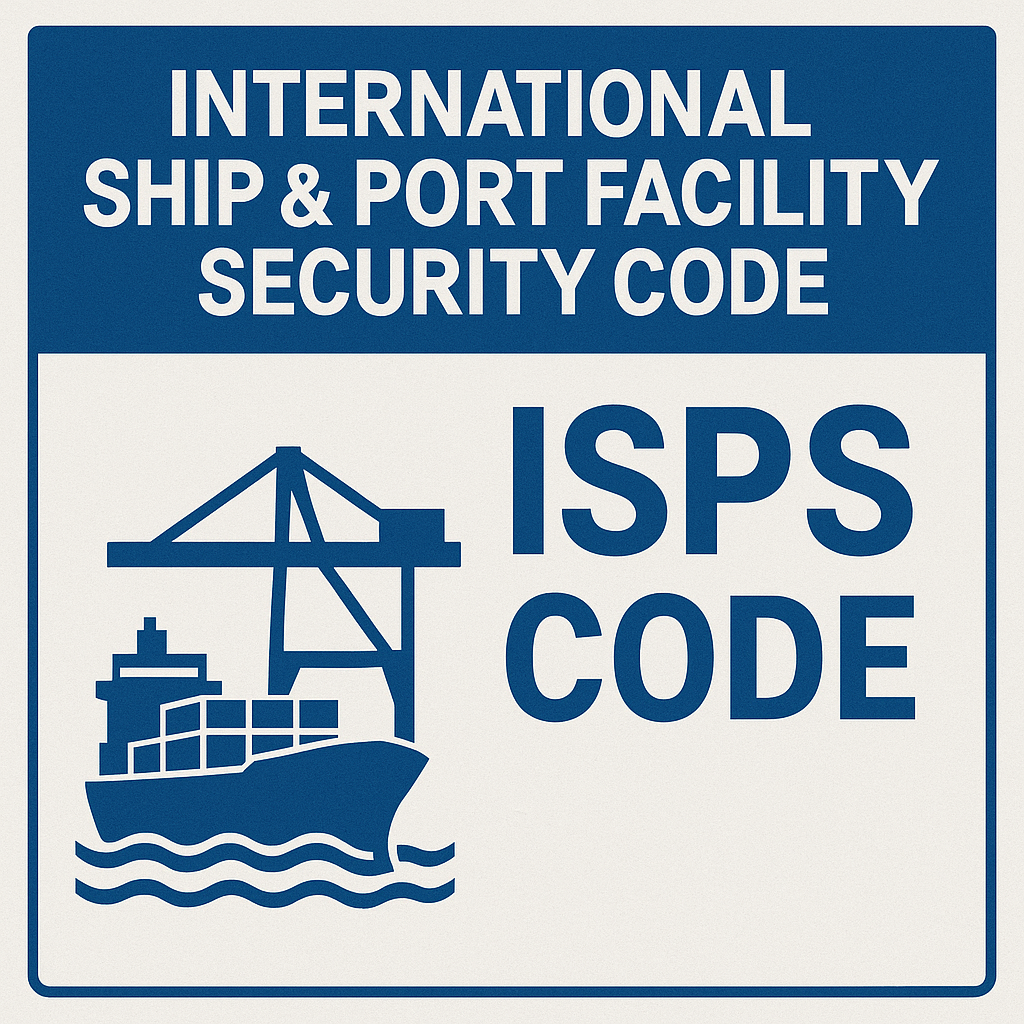In today’s globalized trade environment, ensuring the safety of cargo, ports, and ships is a priority. One essential regulation in this context is the International Ship & Port Facility Security Code (ISPS Code). This article provides a clear and practical guide to the code’s function, structure, and role in international maritime operations.
1. Definition of the ISPS Code
The international ship & port facility security code is a comprehensive set of measures adopted under the SOLAS Convention in 2002 and made mandatory from July 1, 2004. Its purpose is to safeguard ships and port facilities from threats such as terrorism, piracy, and sabotage.

2. Why the ISPS Code Matters in Global Shipping
The ISPS Code ensures uniformity in how countries manage maritime threats. It creates a structured framework for:
- Identifying and mitigating security risks
- Enhancing communication between ships and ports
- Protecting crews, cargo, and infrastructure
These goals are especially important given the volume of goods moved via sea—over 80% of world trade relies on maritime transport.
3. Who Must Comply?
The ISPS Code applies to:
- Cargo vessels over 500 gross tonnage
- Passenger ships on international voyages
- Port facilities serving these ships
- Offshore units like oil rigs
Compliance is mandatory for vessels and ports engaged in international shipping.
4. Key Components of the ISPS Code
📍Security Assessment
Each facility and vessel must conduct a security assessment to identify potential vulnerabilities.
📍 Security Plan
A customized Ship or Port Facility Security Plan (SSP/PFSP) is developed based on the assessment. This plan includes protocols for access control, monitoring, and incident response.
📍Security Officers
The ISPS Code requires designated personnel:
- CSO (Company Security Officer)
- SSO (Ship Security Officer)
- PFSO (Port Facility Security Officer)
These roles are central to implementing and maintaining security procedures.

5. Security Levels Explained
The ISPS Code defines three security levels:
- Level 1 – Normal operating conditions
- Level 2 – Heightened security threat
- Level 3 – Imminent threat or confirmed risk
Shipmasters and port authorities adjust procedures accordingly at each level.
6. Impact on Transportation Operations
Nearly 30% of international logistics activities involve direct port access or sea movement, making ISPS compliance crucial in:
- Customs clearance
- Vessel berthing schedules
- Freight inspections
- Multimodal integration (sea + rail or truck)
Transport delays, re-routing, or fines can occur if a ship or port is non-compliant.
7. Benefits of ISPS Compliance
- Reduced risk of security breaches
- Improved international credibility and cooperation
- Lower insurance premiums
- Streamlined inspections and port access
It also enables faster intermodal shipping by reassuring authorities at every step of the supply chain.
8. Global Enforcement of the ISPS Code
Many national authorities have implemented ISPS within their maritime laws:
- U.S.: Through the Maritime Transportation Security Act (MTSA)
- EU: Via Regulation (EC) No 725/2004
- Asia-Pacific: Widespread adoption through IMO directives
Port State Control inspections ensure vessels comply before granting entry.
9. Common Challenges and How to Overcome Them
- Outdated security plans → Update regularly
- Untrained crew → Conduct refresher training
- Failure to coordinate with ports → Maintain clear communication with port security officials
These steps help ensure continuous compliance with the international ship & port facility security code.
10. ISPS in Multimodal Logistics
Although created for sea transport, ISPS principles affect other modes:
- Rail and road carriers must comply when entering port zones
- Air freight terminals near seaports may also require restricted access under ISPS
- Door-to-door shipments depend on smooth port transfer—ISPS plays a vital role
Request a Quote
Need a tailored solution for your shipping from China?
Let TJ China Freight Forwarder assist you with reliable, cost-effective service.
FAQ:
Q1.What is a Port State Control inspection?
A government audit to verify a ship’s compliance with international standards, including the ISPS Code.
Q2.Can a vessel be denied port entry for non-compliance?
Yes. Ports can reject ships that fail to meet ISPS Code standards.
Q3.Are small cargo ships affected by the ISPS Code?
Only those above 500 gross tons on international voyages are required to comply.
Q4.Does the ISPS Code affect cargo insurance?
Yes. Non-compliance may increase insurance premiums or void coverage.
Q5. Is the ISPS Code linked with other security programs?
Yes. It aligns with global standards like C-TPAT and AEO programs.
